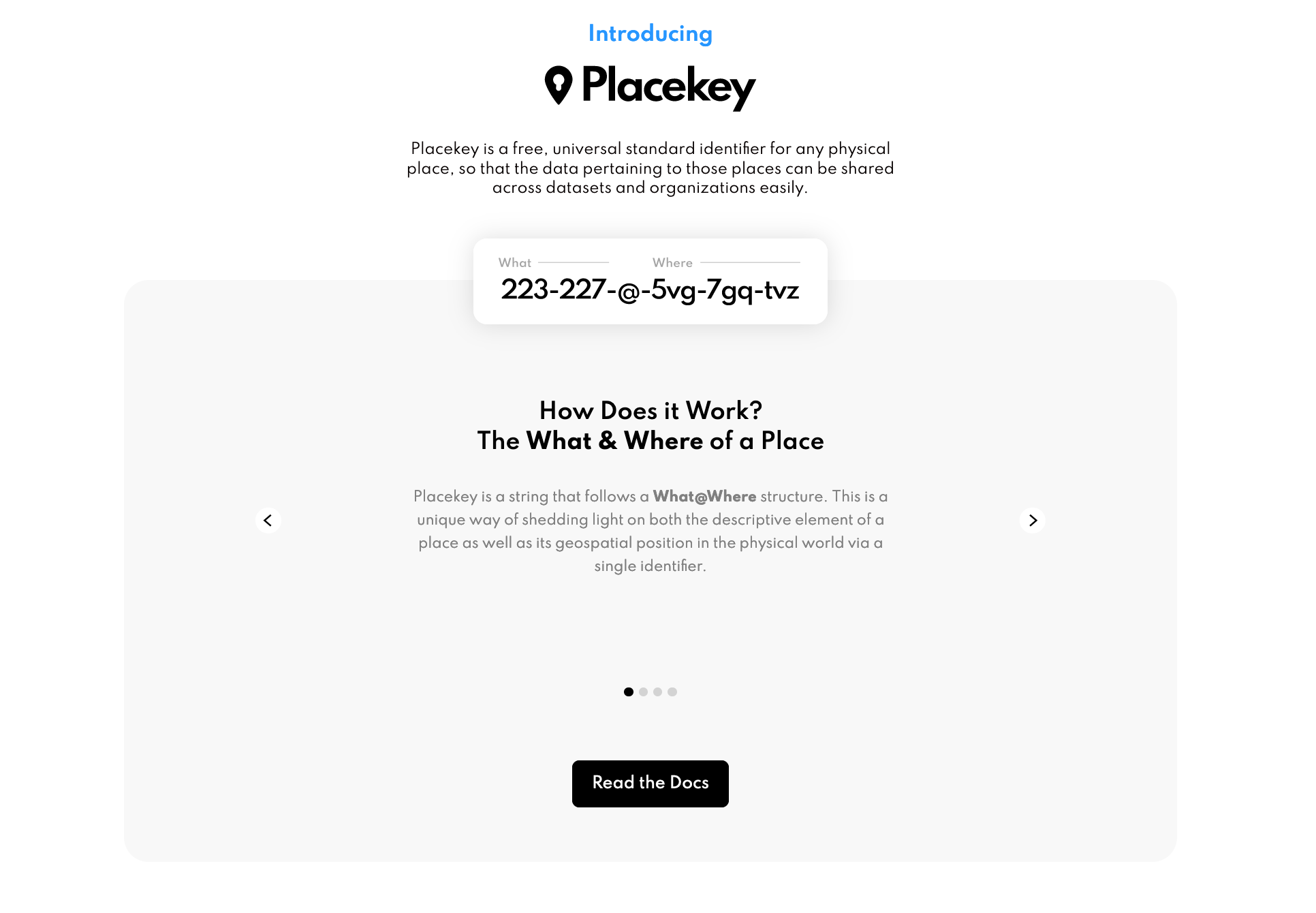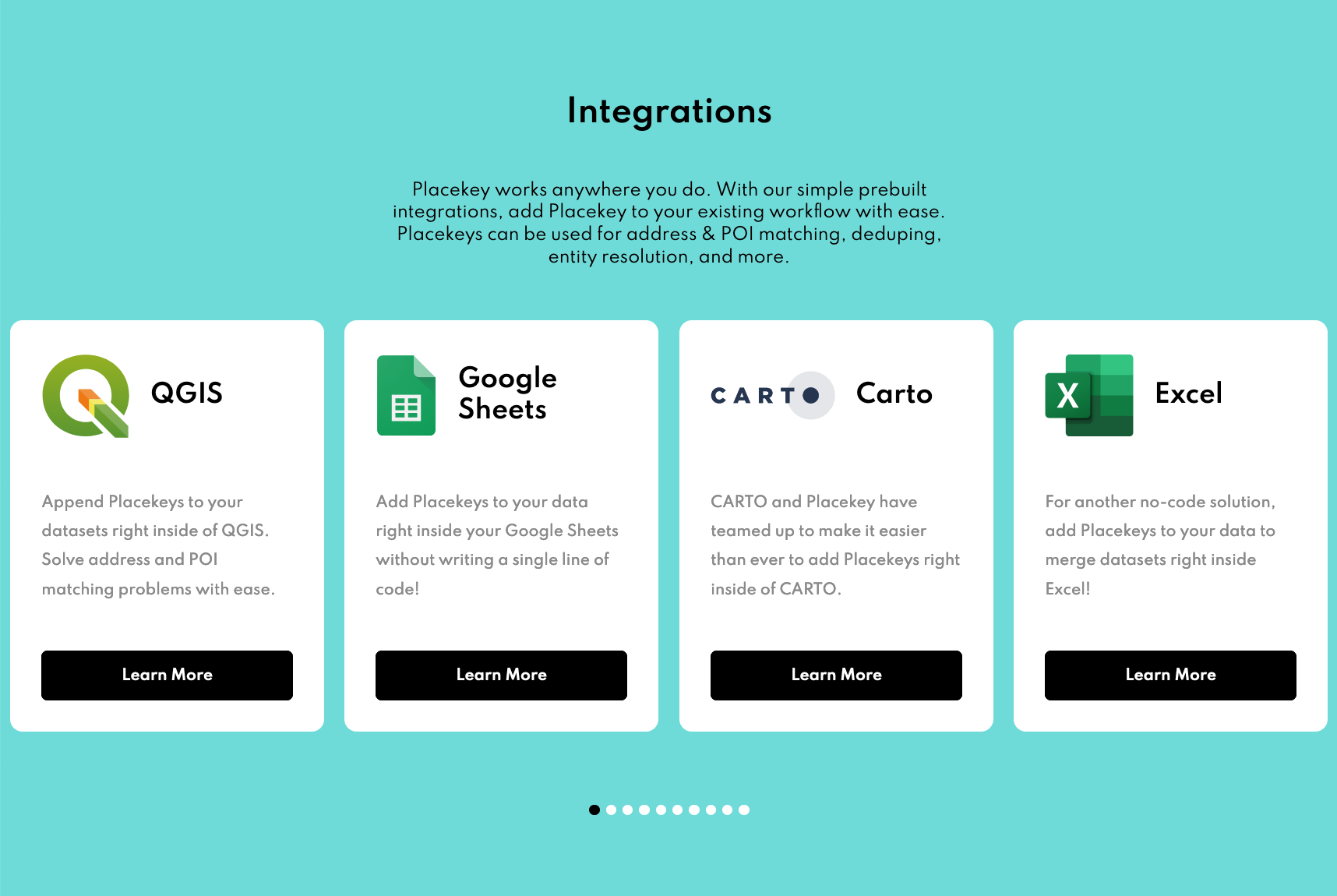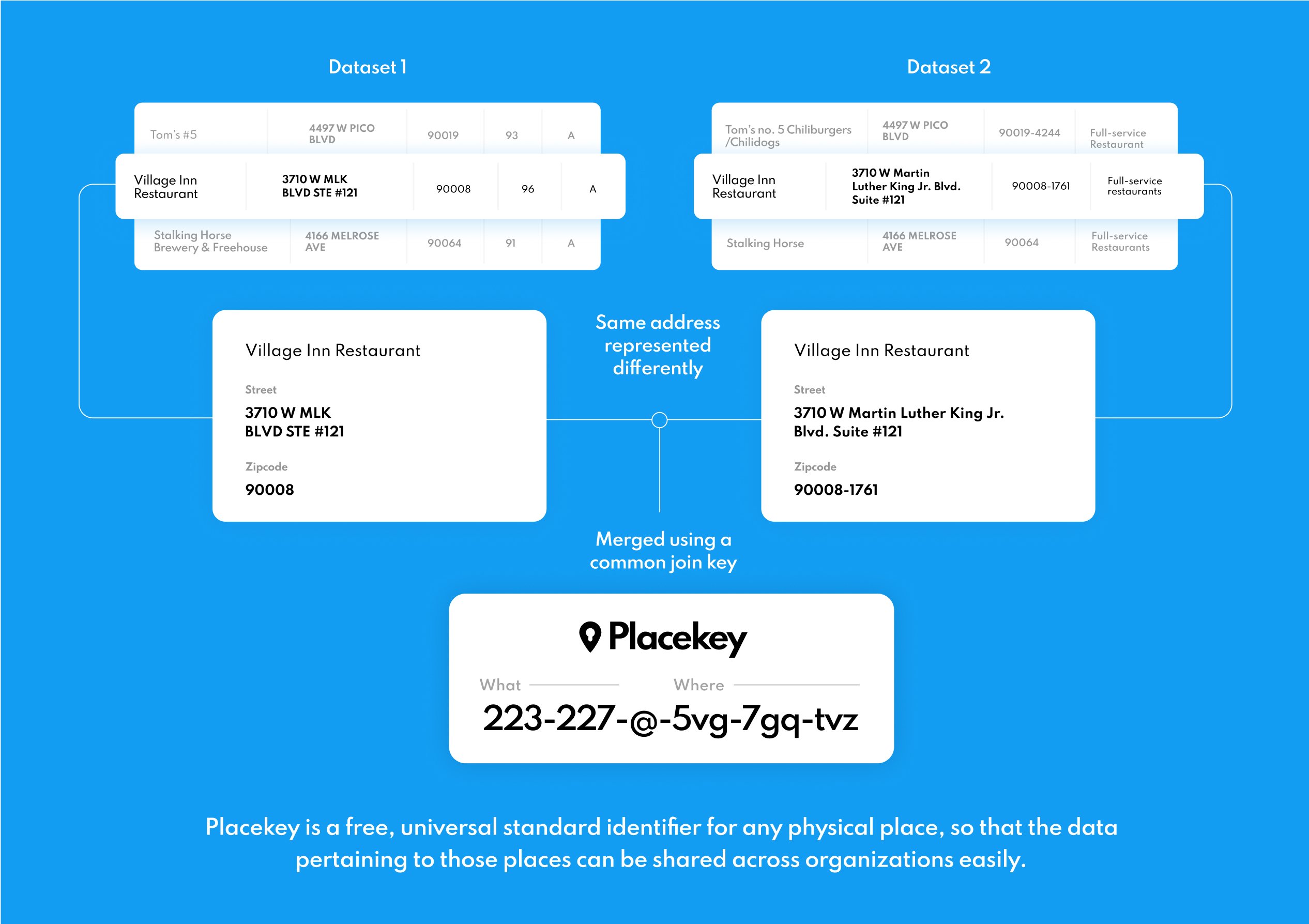Placekey is a free and open universal standard identifier for any physical place so that the data pertaining to those places can be shared across organizations easily.
Placekey creates a common industry standard for identifying any physical place. Eventually, there will be a Placekey for every place in the world, even those without a postal address (school district, county, neighborhood, etc.).
However, Placekey goes beyond just an identifier. It’s a movement of organizations and individuals that prize access to data. Placekey members want geospatial data that is easily joined and combined…because real answers come from combining data from many different sources. It is a philosophy that data should be easy to access and data should not be hoarded. These members believe that data, when combined, can do massive good.
How much does it cost to use the Placekey API?
Absolutely nothing.
Whether you generate a Placekey via this website or use the Placekey API, it will always be free.
*Should a business ping the Placekey API with a massive number of requests—in the millions per month, for example—we may invite you to help us cover those computing costs.
Who is using Placekey?
Over 500 organizations have signed on to support Placekey including Esri, SafeGraph, Carto, and Landgrid.
What does a Placekey look like?
Here is an example of a complete Placekey:
223-227@5vg-7gq-tvz
The “What Part” (in front of the “@”) consists of two unique character sequences.
The first three (or more) characters refer to Address Encoding, creating a unique identifier for a given address. An address at “555 Main Street Suite 105” will have different Address Encoding than “555 Main Street Suite 106.”
The second set of three (or more) characters in the What Part refers to POI Encoding. If a specific place is already included in the Placekey reference datasets, these characters will be present. The benefit of POI Encoding is that it can point to a specific Point-of-Interest that may have existed at a certain address at a given point in time. While Address Encoding allows Placekey to hone in on a specific address, there’s always the chance that either:
1. Multiple businesses can exist at the same address at the same time (i.e. a Starbucks coffee shop within a Target retail store); or
2. Multiple businesses may have occupied that space over time (i.e. what may have been a Chipotle restaurant a year ago is now a McDonald’s restaurant).
The “Where Part” (after the “@”), on the other hand, is made up of three unique character sequences, built upon Uber’s open source H3 grid system. This information in the Where Part is based on the center point of that place. In other words, we take the exact latitude and longitude of a specific place and then use a conversion function to determine which hexagon in the physical world contains the centroid of that place. The hexagon is currently fixed at H3’s Resolution 10 (about 15,000 square meters). The Where Part of the Placekey is, therefore, the full encoding of that hexagon.

















